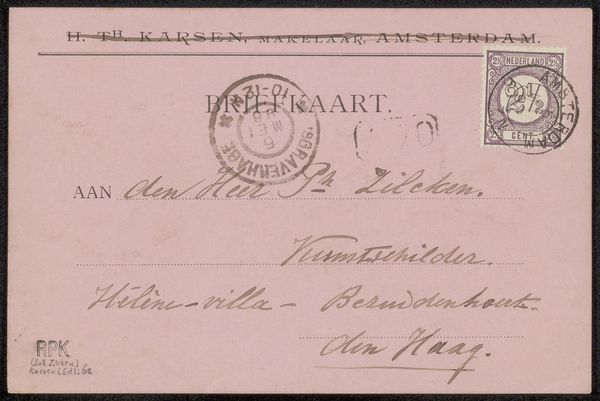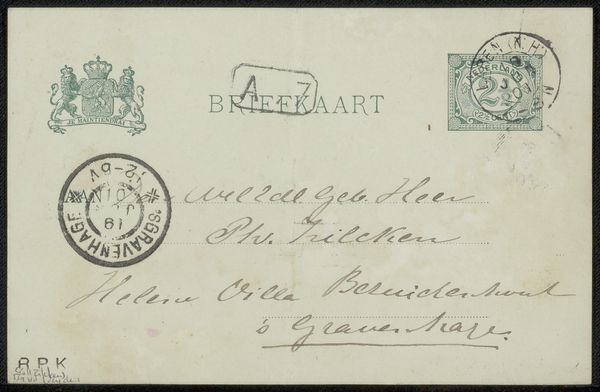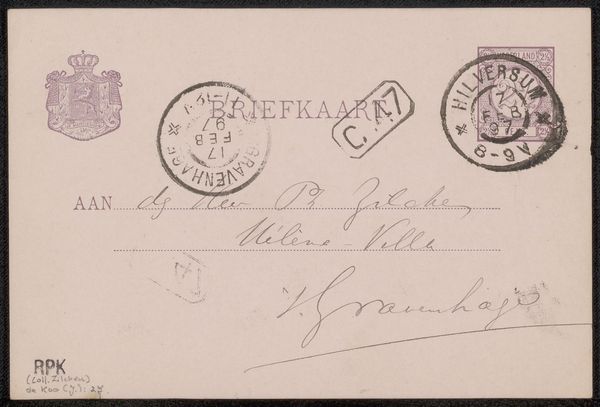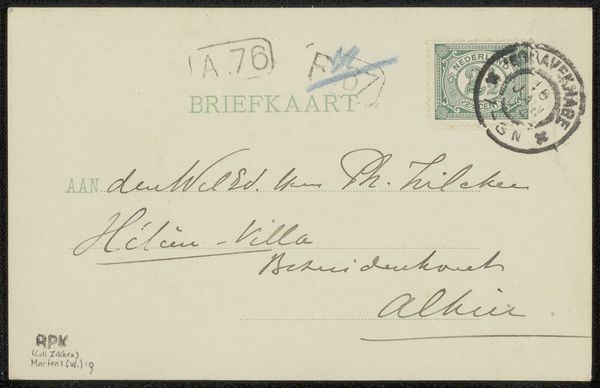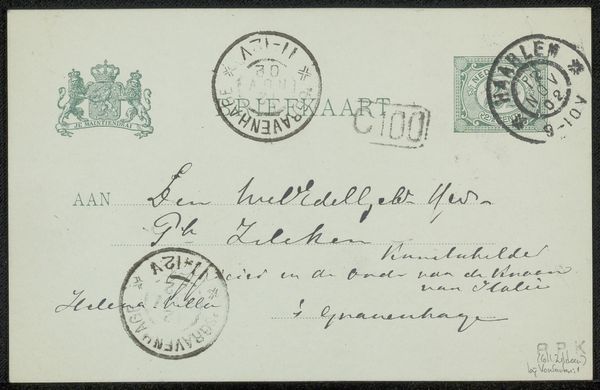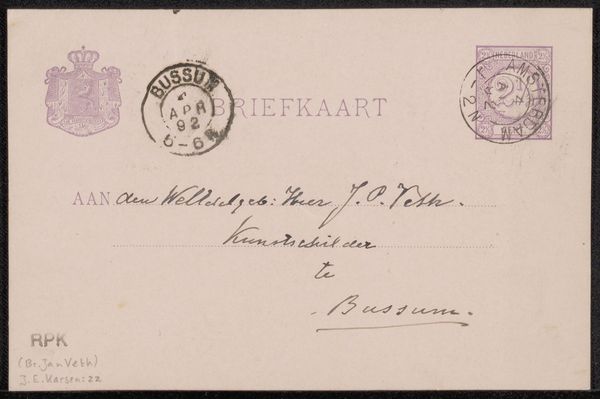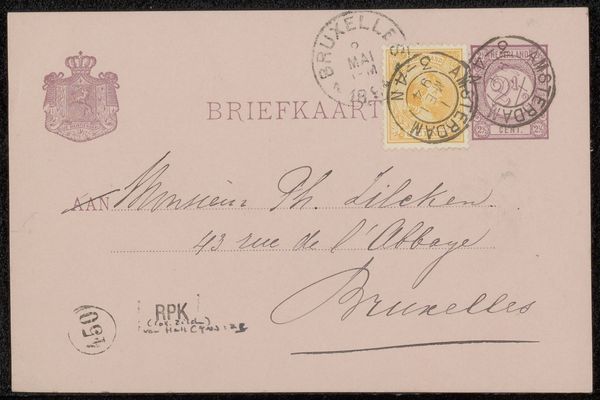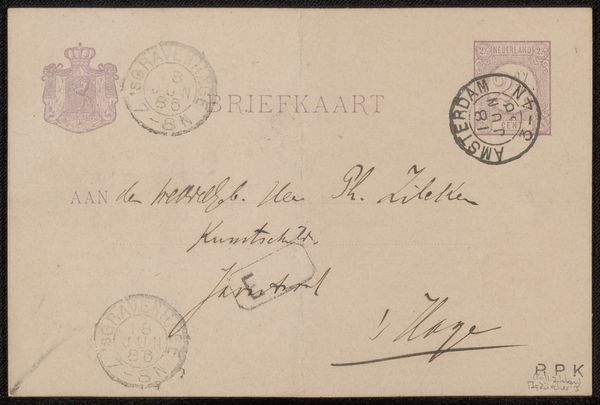
drawing, paper, ink
#
drawing
#
pen drawing
#
paper
#
ink
Copyright: Rijks Museum: Open Domain
Editor: This is a postcard, "Briefkaart aan Jan Veth," created by Eduard Karsen in 1891. It’s an ink drawing on paper. There is something really interesting about a pen drawing *of* a postcard, using the same medium. What strikes you about it? Curator: The very fact that it is an *image* of a postcard compels us to decode its signs: postal marks, address and stamps, function as visual elements, rather than for actual mailing, ironically pointing to themes of communication and connection within a formal structure. How do the scripted lines divide up the pictorial space? Editor: I see what you mean. The address is very carefully inscribed; it is not just informative text but part of the composition, delineating the surface. The curves and lines act almost as a filigree, dividing up the plane. So is it more about form and shape than, say, social history? Curator: Indeed. While it may whisper historical narratives, our focus remains on the artwork’s inherent components—line, form, and spatial arrangement—asking questions such as: how do the different visual marks interplay within the overall composition, and how are the curves distributed over the image? Editor: It is such an ordinary object, rendered with such precision…it seems the commonplace itself can be worthy of artistic observation and restatement. I guess that shifts my focus. Curator: Precisely! By focusing on its internal structure and artistic intentions, it prompts one to decode meaning not through the artwork’s supposed historical significance, but rather its careful formal composition.
Comments
No comments
Be the first to comment and join the conversation on the ultimate creative platform.

